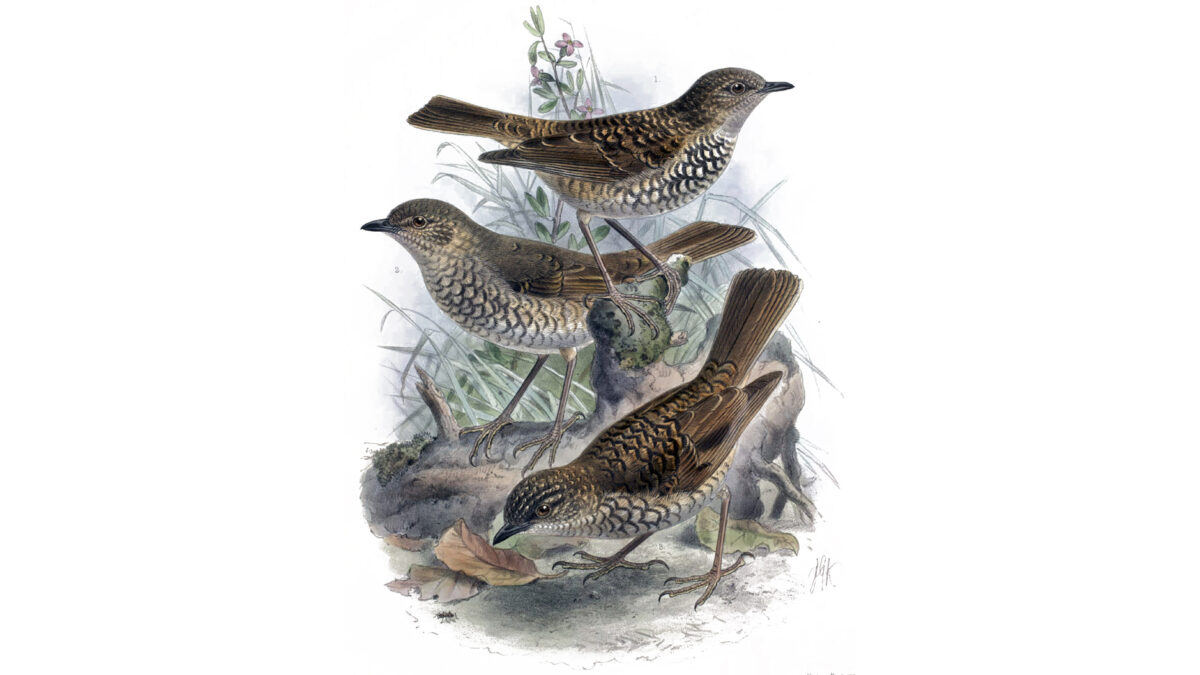In 2023, the U.S. Fish and Wildlife Service declared 21 species officially extinct by removing them from list of species protected under the Endangered Species Act. I recently put together short obituaries for a few of the species we lost.
Amidst the dense, lush undergrowth of Kauaʻi’s rainforests, where the dampness held the whispers of myriad life forms, the Kāmaʻo—also known as the Large Kauaʻi Thrush—once reigned as a ubiquitous presence. This bird, measuring eight inches with a brownish olive body and a contrasting gray belly, complemented by dark bill and legs, embodied the spirit of the island’s rich avian community. As recently as a few decades ago, the Kāmaʻo’s melodic calls were a common chorus in these verdant habitats. However, this chorus fell silent with the last confirmed sighting in 1987, marking another poignant chapter in the narrative of extinction.
The Kāmaʻo, feeding primarily on fruit and insects, played a pivotal role in the health of its rainforest home. As a frugivore and insectivore, it aided in the dispersal of seeds and the control of insect populations, fostering a balance within its ecosystem. Its decline from prominence to obscurity mirrors the fate of many island species worldwide, susceptible as they are to the compounded threats of habitat loss, invasive species, and disease—challenges magnified by their isolated habitats.
The disappearance of the Kāmaʻo from the wild is not merely the loss of a species but a profound silence in the ecological symphony of Kauaʻi. It underscores the fragility of island ecosystems, where even the most common species can quickly become memories if protective measures falter or arrive too late. The story of the Kāmaʻo is a stark reminder of the rapid environmental changes occurring on our watch and the urgent need for comprehensive conservation strategies that address both immediate threats and long-term ecological health.
In reflecting on the extinction of the Kāmaʻo, let us recognize the broader implications of our environmental stewardship. Each species lost is a misstep in our dance with nature, a reminder of what is at stake. Let the memory of the Kāmaʻo inspire a renewed commitment to the environment, urging us to act decisively and thoughtfully to preserve the remaining threads of our planet’s biodiversity. In honoring the Kāmaʻo, we must strive to ensure that no other voice in our natural chorus is abruptly stilled, that no other song fades into the stillness of extinction.

